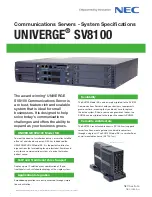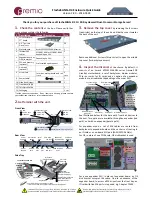
Partitions on the storage devices must be one of the following file system formats:
FAT32
NTFS (read-only)
Ext2
Ext3
To the right of the access icons are command options for the device. The following commands are
available:
Unmount
:
This option prepares the USB partition for disconnection by properly
unmounting the file system. In most cases, you can safely disconnect the device
without first unmounting; however, the Unmount command ensures that any data
still in the write-cache is written out to the disks and the file system is properly
closed. The Unmount option will unmount all partitions on the device.
Mount
: If
an
Unmount
operation was performed, the
Mount
command re-mounts the
partitions and makes the USB share accessible again.
Locate
:
In cases where you attach multiple storage devices and wish to determine which
device corresponds to the device listing, the
Locate
command will blink the
device LED, if present.
Format FAT32
: This option formats the device as a FAT32 file system. FAT32 format is easily
recognizable by most newer Windows, Linux and Unix operating systems.
Format EXT3
: This option formats the device as an EXT3 file system. Select this option if you
will be accessing the USB device mainly from Linux systems or ReadyNAS
devices. The advantage of EXT3 over FAT32 is that file ownership and mode
information can be retained using this format whereas this capability is not there
with FAT32. Although not natively present in the base operating system, Ext3
support for Windows and OS X can be added. The installation images can be
downloaded from the web.
41
Page 41















































